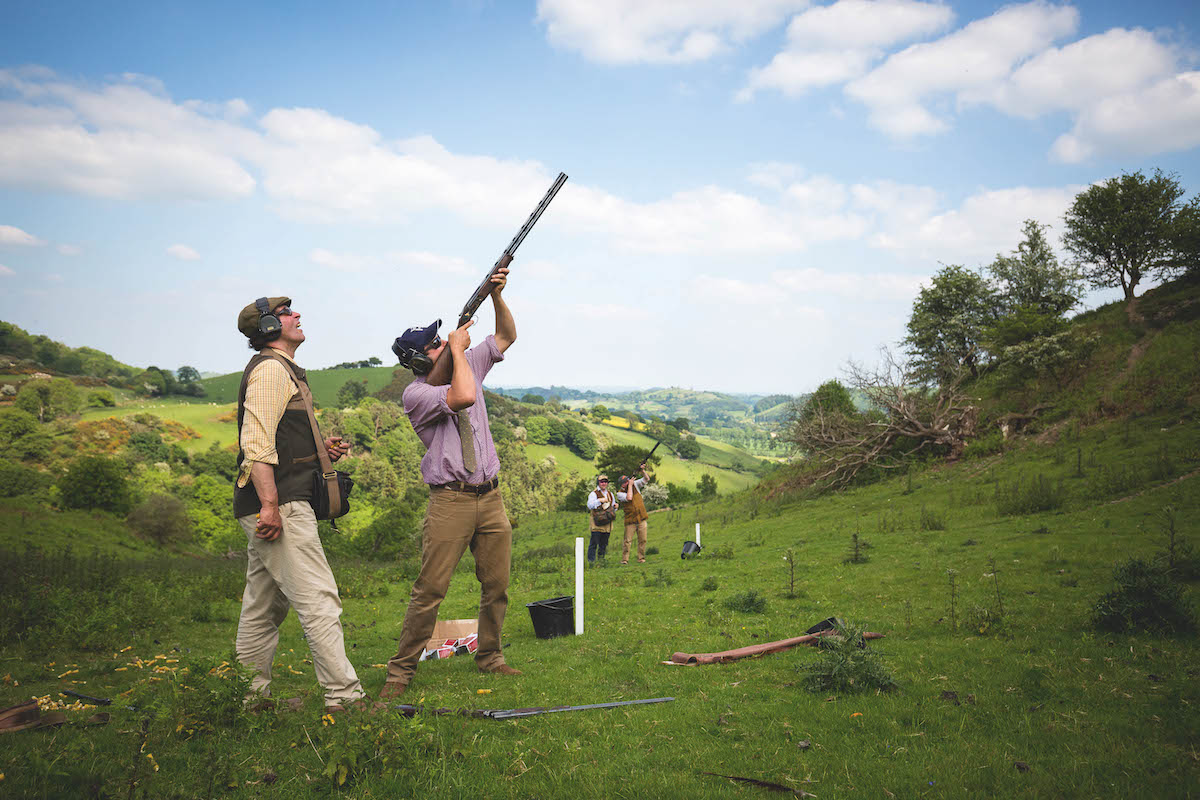Win CENS ProFlex DX5 earplugs worth £1,149 – enter here
Simulated game days: disaster waiting to happen?
 Usd 26 june 19 expert shot
Usd 26 june 19 expert shot
In 1988, I visited a farm shoot in Kent where the prime drives had been wiped out by the Great Storm that had ravaged the countryside in October of the previous year. The enterprising syndicate had sited clay pigeon traps among the stumps so as to recreate, as far as possible, their favourite pegs.
It was a clever idea and it was tremendous fun — I enjoyed it then and I enjoy it now. But, as with so many things, I believe it is better undertaken in moderation.
Except that, as with every clever idea, there is always someone who decides to do it bigger and better. So what was a simulation of an exciting pheasant drive, for example, is now a representation of the most intense pheasant drive ever — in the world, in the universe, in space. (Read just how good is a simulated game day?)
Simulated game days
Your opinion may differ from mine, but I reckon I’m having the drive of the season if I have to turn to my cartridge bag after firing the pocketful of shells with which I walked to my peg. So to be told to expect to fire 100 shots in a drive is an altogether different experience. And therein, I suspect, lies the potential for disaster.
Simulated game days are sold to us as the same as game shooting, only more so. More birds, more shooting, more excitement. What’s not to like? But we are also told that many of the finer points of game shooting behaviour can be stretched or, indeed, dispensed with altogether.
“You can shoot your neighbour’s bird! Your neighbour’s neighbour’s bird! You can shoot at birds you would never contemplate on a real day! It’s fantastic!” (Read how to judge which bird is yours on a driven pheasant day.)
But is it? Those rules are there for a reason. You don’t shoot at your friend’s bird towards the other end of the line mainly because there are five or six other Guns in between. We eschew the unfeasible bird not because it’s probably impossible anyway, but because swinging through it will take our muzzles to places where they ought not to be.
Simulated game shooting can be huge fun. But somehow — sometimes — it seems to have become an opportunity to do things that we would not do on a ‘proper’ day. And that’s where the dangers start to creep in.
I know clay targets permit a more controlled environment than live quarry, but here there are more birds in the air than some shooters have ever seen before, which present a bewildering range of options for those more used to birds arriving in twos or perhaps threes. The barrels are so hot that they cannot be gripped firmly, even through the thickness of a glove, and a mixture of sun and sweat makes it harder to focus.
There is active encouragement to attempt extreme shots ringing in the ears and I’m not even going to mention the possibility of there being fizzy pop available, sometimes at breakfast, probably at elevenses and certainly at lunch. That is a cocktail of risks that can slip into disaster and tears before bedtime. (Read more on alcohol and guns.)
And that is before you add in the element of experience. Arguably, simulated game shooting requires more expertise, more training and more discipline than a day in the field, yet it is presented as an altogether more manageable undertaking, suitable for novices.
Once, I was invited to observe a simulated day at a very grand estate that had been laid on as a bonding and team-building exercise for some management types. It was beautifully run. There were detailed explanations of everything. There weren’t, to be fair, too many birds and there were experienced loaders for every Gun. But still I watched as one of the guests blew a fist-sized hole in a fence post while waiting for one of the drives to begin. More is not always better.
Related Articles
Get the latest news delivered direct to your door
Subscribe to Shooting Times & Country
Discover the ultimate companion for field sports enthusiasts with Shooting Times & Country Magazine, the UK’s leading weekly publication that has been at the forefront of shooting culture since 1882. Subscribers gain access to expert tips, comprehensive gear reviews, seasonal advice and a vibrant community of like-minded shooters.
Save on shop price when you subscribe with weekly issues featuring in-depth articles on gundog training, exclusive member offers and access to the digital back issue library. A Shooting Times & Country subscription is more than a magazine, don’t just read about the countryside; immerse yourself in its most authoritative and engaging publication.







